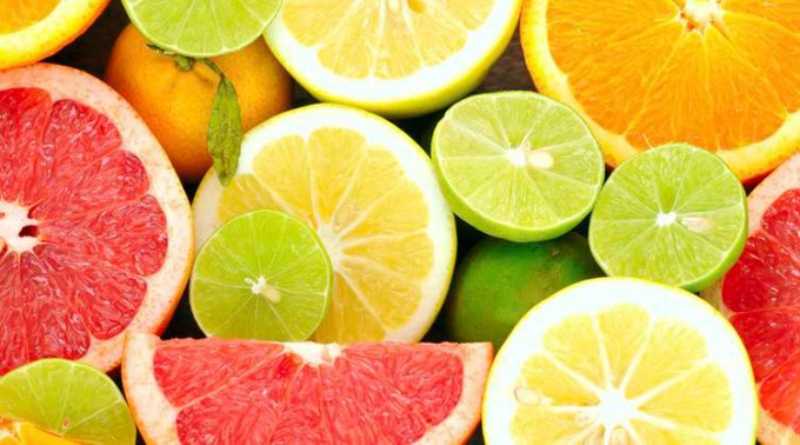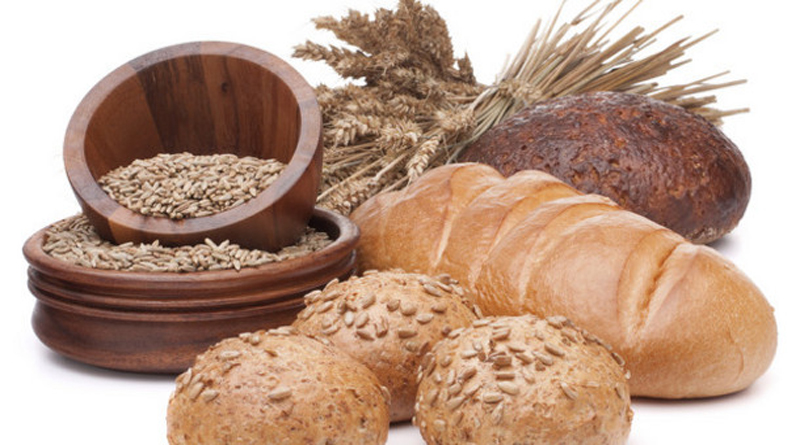“The combination possibilities of citrus are endless,” say suppliers
Citrus and tropical flavor tones have long been popular with consumers, but this summer as the weather begins to heat up, the industry can expect to see more NPD using exotic fruit combinations and new citrus varieties. The mature fruit flavor category is still at the center of innovation with undiscovered tropical fruits inspiring NPD. Exotic fruit flavors are standing out for their aroma and texture, while fresh and zesty citrus flavors remain on trend. FoodIngredientsFirst takes a closer look at the flavors expected to be trending this summer.
According to data from Innova Market Insights, twice as many new food and beverage launches with floral flavors were reported globally in 2018 compared with 2016. Fresh and zesty citrus flavors are also on the rise, with 26 percent growth reported in food and beverage launches with yuzu flavor (Global, 2018 vs. 2017).
Exotic fruit flavors are standing out for their aroma and texture, while fresh and zesty citrus flavors remain on trend, according to the market researcher.
This summer we expect to see additional and new ways of presenting citrus such as roasted, preserved and candied citrus, as well as black lemon (dried lime) which are influenced by culinary innovation and techniques,” Basak Oker, Category Manager Beverages, Givaudan, EAME, tells FoodIngredientsFirst. “Tropical flavors have also been trending over the past year – especially the rise of pineapple – which we anticipate will continue. Other tropical flavors we see trending are pandan, passionfruit and tonka bean.”
Pandanus amaryllifolius is a tropical plant in the Pandanus genus, which is commonly known as pandan and is used widely in South and Southeast Asian cooking as a flavoring, while tonka beans come from the Dipteryx odorata, a species of flowering tree in the pea family, Fabaceae. The tree is native to Central America and northern South America.
Across the EAME region, we have seen new and unexpected citrus varieties such as yuzu, bitter/sour orange and pink grapefruit trending cross-category, Oker says.
Tropical flavors are also proving popular in both alcoholic and non-alcoholic beverages, especially lemonades, according to Oker. “Some combinations which we know work well with citrus are lemon-thyme, citrus & ginger, citrus & pineapple, lime & chili, pink grapefruit & green tea, citrus & herb bitters and basil-lemonade,” she explains.
Moreover, as the trend continues for European consumers to reduce their alcohol intake, or even move away from alcohol altogether, we see more sophisticated, citrus-based, non-alcoholic beverages appearing in out-of-home venues.
To create more sophisticated tastes, mixologists often use culinary herbs and processes alongside citrus. “We see examples of this in new lemonade varieties such as citrus with florals, including lavender or orange blossom, and herbs such as citrus and basil. These herbs and botanicals elevate the taste profile of beverages, creating a completely new drinking experience, notes Oker.
For Laura Tirelli, Managing Director at L’Italiana Aromi, citrus and tropical have always been typical summer flavors because they are fresh and they remind consumers of sun, holidays and holiday destination countries. “The demand for bergamot is increasing though it is used more as an accompanying flavor to avoid perfumery aftertastes,” she says.
Citron is also in high demand, but its elevated price and limited availability restricts its use in the flavor industry, Tirelli notes. “Lemon continues to be the most important in terms of sales. Lime and grapefruit are always in demand, while orange is in demand in soft drinks containing juice. With regards to tropical fruits, mango and passion fruit are, according to our experience, the most demanded. Pineapple and coconut flavors follow this closely.”
“Citrus goes well with slightly hot spicy notes such as ginger, pepper or with some fresh tastes such as mint, cucumber and fennel. Also combinations of floral extracts – lavender, rose, elderflower, orange blossom with different citrus flavors, are popular for alcoholic and non-alcoholic drinks. Fresh, floral or vegetal notes and spicy, hot notes give some more zest to traditional tastes and are quite popular with today’s consumers.”
“Some tropical fruits coming from Asia may be more appealing than others coming from the US,” she adds.
Carolyn Chen, Marketing Manager at Takasago, believes that consumers are first, interested in the origin of a flavor or ingredients and then following that, the desire to experience new and unique flavors.
“New product launches with provincial flavors are a way to attract consumers who are interested in trying something different and authentic,” says Chen. Takasago has a selection of trendy provincial citrus fruits, including Chinese pomelo, Japanese yuzu, Japanese dekopon, Mexican key lime and Philippines calamondin. “We have seen product launches across categories, ranging from beverages to confections to yogurt, that are developing exotic flavors to stand out on the shelf.”
“We know that refreshing beverages, in various citrus or tropical flavor combinations, are popular in the summer heat. The Mexican drink agua fresca, ‘fresh water’ or ‘cool water,’ is growing in popularity due to its refreshing, thirst-quenching fresh fruits appeal and is a soft drink alternative. Taking inspiration from popular agua fresca flavors such as mango, pineapple, coconut, watermelon and strawberry,” notes Chen.
When thinking about citrus flavors, many consumers tend to think of the edible fruit itself, but when you look at the entire citrus plant, the citrus blossoms that occur prior to the actual fruit provide a unique aroma and flavor, says Chen. In response to this, Takasago has created a collection of citrus blossom accords that pair perfectly with citrus profiles and includes flavors like Buddha’s Hand Blossom, Siamese Pink Pomelo Blossom, Nine Pound Lemon Blossom, Persian Lime Blossom, Tango Mandarin Blossom, Flame Grapefruit Blossom, Valencia Orange Blossom and Sunki Leaf.
“Floral flavors are also still trending, and the combination of floral and citrus introduces consumers to the concept of an unfamiliar flavor and a familiar flavor,” she adds.
Coffee lemonade or ready-to-drink (RTD) coffee combined with other citrus fruits such as grapefruit or orange have been appearing at coffee shops and in retail the last couple of years, Chen says. “Perhaps this is playing on the half iced tea and half lemonade concept, or perhaps the hybrid trend of combining two popular products, or even because espresso is often served with a lemon peel on the side to help cut the bitterness,” she explains.
For Megan Byrnes, Marketing Representative at Gold Coast Ingredients, citrus and tropical flavors are certainly on the horizon. “The weather is warming up and consumers will soon be looking for lighter food and beverage options to help keep them feeling refreshed during the summer months,” she notes.
For the second half of 2019, Byrnes predicts more kiwi fruit and pairings with flavors such as strawberry, lime and cucumber. “Other popular flavors that will continue to be trending this summer are coconut and pineapple, both paired together and separate flavor options. Three very popular summer flavors that we expect to see more of in the next few months are lemon, lime and mango,” she explains.
“Lemon and lemonades are complemented by raspberry, strawberry, watermelon, mango, pineapple, fresh mint, blueberry and ginger flavors. Lime flavored applications are also often infused with strawberry, raspberry, mango, watermelon, fresh mint and coconut.
As summer approaches, citrus flavors will enhance applications including beverages, dairy products, frozen treats, baked goods, desserts, dressings and sauces, says Byrnes. “More specifically, consumers will find an increase in citrus-infused sparkling waters, lemonades, iced teas, juices, cocktails, yogurts and sauces.”
Dominique Delfaud, Director for Marketing, Sensory and Consumer Research at Mane notes that the citrus family is diverse and only a few varieties are widely consumed in Western countries. “In the last years, we have observed the growth of some new citrus supported by the growing popularity of Asian cuisine. Kaffir Lime is the precursor of this new citrus wave,” she comments.
Research has shown that consumers have an appetite for new and exotic varieties of citrus. “At Mane, we believe that some highly aromatic citrus such as Combava or Ichang Lemon will also gain momentum in the market.”
For Delfaud, opportunities in soft drinks are at the top of the list, but, she notes, that citrus and tropical flavors work for all applications, no exception, from confectionery to snacks and culinary. “Citrus and tropical flavors are more and more prevalent in dairy, further strengthening the freshness experience in this category of products.”
“The combination possibilities of citrus are endless,” she continues. “On the healthy spectrum side, you can find popular combinations with honey, ginger and green tea. On a more fun angle, cocktail flavors with a citrus twist, lime, in particular, are still trendy, including mojitos, caipirinhas and mai tais,” Delfaud concludes.
What’s next?
The demand for citrus flavors will continue to increase, and the industry will see more citrus varieties popping up in NPD. Soft drinks, alcoholic beverages and confectionery will thrive in relation to citrus and tropical flavors and more unusual combinations will appear in supermarkets shelves and in the foodservice arena. In the desserts space, citrus and new tropical flavors will be used more widely, as consumers seek new and exciting taste and sensorial experiences, as denoted by Innova Market Insights touting 2019’s number one trends – “Discovery: The Adventurous Consumer.”
Source: Food Ingredients First










